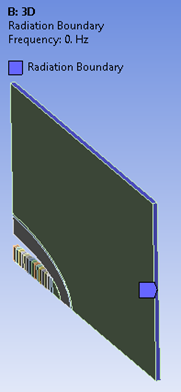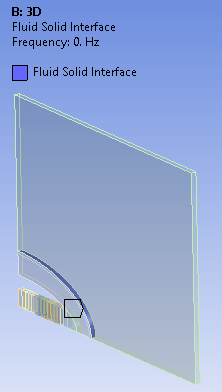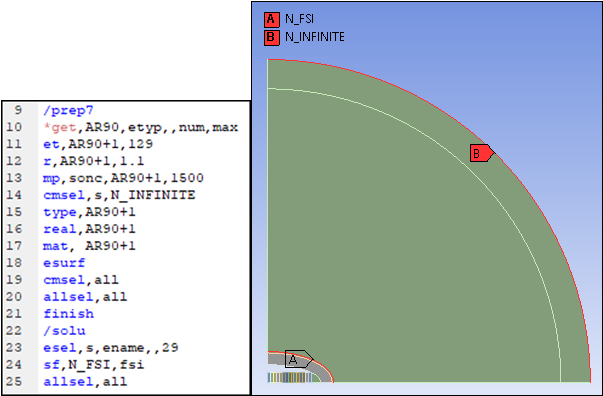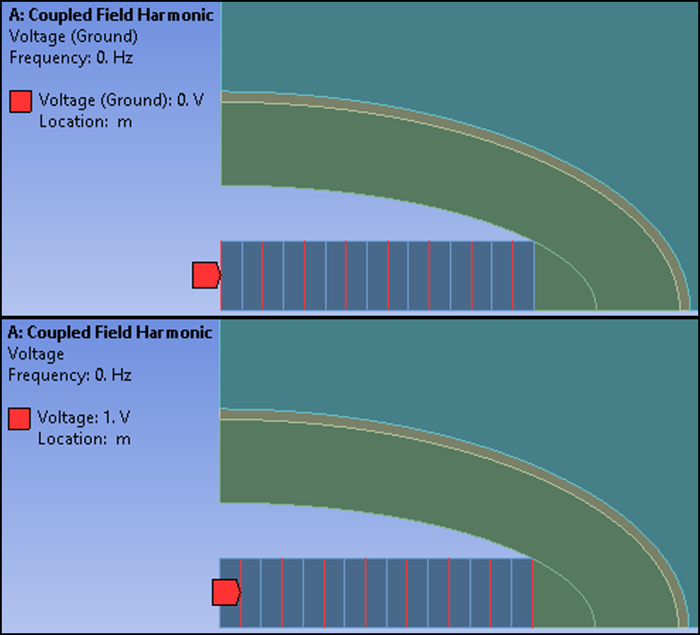Following are the boundary conditions and loading applied to the piezoelectric flextensional transducer model:
Because a quarter of the model is analyzed, two symmetry boundary conditions are applied along the x and y axes as shown below:
The 3D model has an additional z constraint on both planes at z = 0 and 0.01 m as shown below:
Rigid walls and symmetry planes are naturally occurring boundary conditions in an acoustic analysis. Therefore, no acoustic boundary conditions are necessary on the two symmetry planes at x = 0 and y = 0. In the 3D case, the planar surfaces at z = 0 and 0.01 m are rigid walls and do not require boundary conditions.
2D Acoustic Wave-Absorption Condition
For the 2D case, the FLUID129 infinite acoustic element is used to model the wave-absorption condition. Typically, the fluid domain can be truncated around a quarter of the wavelength away from the object of interest. However, because Workbench does not support far-field postprocessing for 2D FLUID29 elements, the calculated results at 1 m must be included in the computational domain. FLUID129 elements are therefore positioned in a circular arc 1.1 m from the center.
To activate the vibroacoustic coupling, the FSI flag (SF,,FSI) is applied to the N_FSI named selection.
A command snippet is used to define the FLUID129 elements and the FSI boundary condition:
3D Acoustic Wave-Absorption Condition
For the 3D case, the modeled domain is Cartesian. A Robin Radiation Boundary is applied to the outermost (+x and +y) surfaces to model the wave-absorption condition. Because far-field postprocessing is supported in 3D, it is not necessary for the computational domain to extend 1 m in distance. The Fluid-Solid Interface is scoped to the structural and acoustic physics interfaces.
Figure 33.13: Acoustic Boundary Conditions for 3D Model
 |
 |
| Radiation Boundary Condition | Fluid-Solid Interface |
Between each piezoelectric ceramic is a terminal (not modeled). Because each terminal is equipotential, voltages of 0 V and 1 V are applied in an alternating fashion between each piezoelectric ceramic part as shown below:
Note: Make sure the polarization axis is set properly by using the local coordinate system for each piezoelectric ceramic part.






